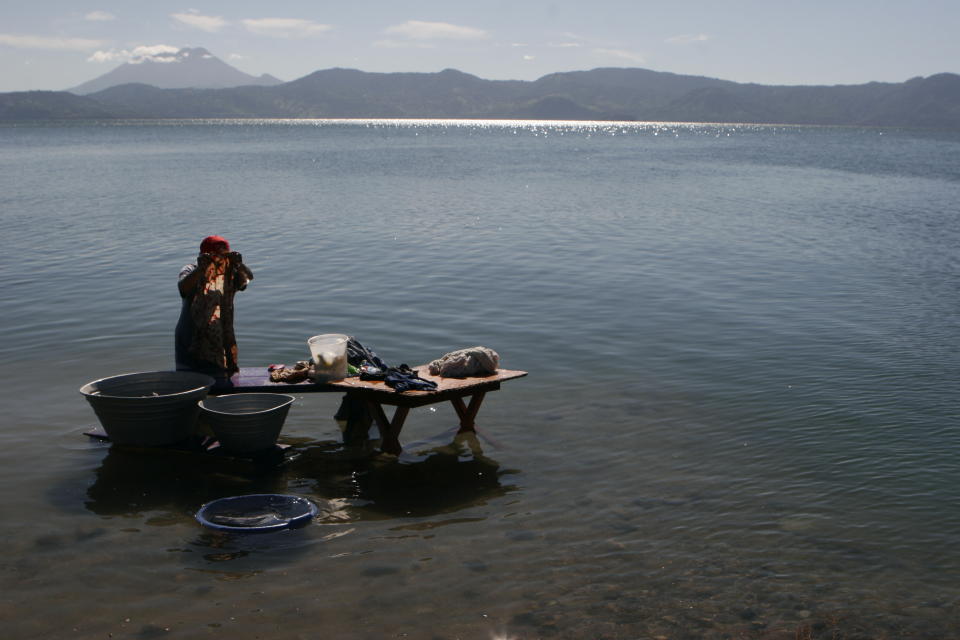12 of the most powerful volcanic eruptions in history

The unimaginable force of a volcanic eruption has a historical hierarchy

Like the the catastrophic eruption of Mount St. Helens over four decades ago, the blast from the Hunga Ha’apai volcano on January 15, 2022 measured at a Volcanic Explosivity Index of 5, with a bottom range of 4.
What does that mean? The VEI scale measures the different variables of an eruption—from debris to the plume’s height—and rates the explosiveness on a 1-to-8 scale. Each number is 10-times more powerful than that of the previous, placing the Mount St. Helens and Tonga volcano blasts among the largest in history.
That alone is incredible, and even more so when considering each occurred during more technological times—i.e. it was captured on film.
But neither eruption, while cataclysmic, cracks the top 5 VEIs of all time.
Take a look…
12. Mount Vesuvius — Italy, 79 A.D.

The famed August 24 eruption buried the cities of Pompeii and Herculaneum under ash and mud, leaving behind an eerie scene—the last moments before the destructive force overcame all who stood in its path.
VEI: 5
11. Huaynaputina — Peru, 1600

Five years after Pompeii and Herculaneum were finally excavated from the 79 A.D. eruption, a massive blast shook the hight plateau area in Southern Peru. The eruption has been credited with impacting the climate, even creating a Little Ice Age.
VEI: 6
10. Laki — Iceland, 1783

Iceland’s volcanic activity has been a newsmaker of late, but none of the present-day rumblings can compete with the violent eruption in 1783. A fissure known as Lakagígar released a toxic blast that year—and it didn’t let for eight months—killing people and livestock. Some historians believe that the famine the eruption caused might have incited the French Revolution.
VEI: 6
9. Krakatoa — Sunda Strait, 1883

Another notable eruption—maybe the most famous after Vesuvius—was the August 27 obliteration of Krakatoa. The blast destroyed the entire island, creating a tsunami that reportedly had waves over 150-feet high, and generated hurricane-force winds.
VEI: 6
8. Santa Maria Volcano — Guatemala, 1902

The first significant blast in the 20th century happened in Guatemala when Santa Maria Volcano’s southern side exploded in an eruption that left a mile-wide crater in the side of the mountain.
VEI: 6
7. Novarupta — Alaska, 1912

Alaska’s Ring of Fire area was the site of next major eruption of the 20th century, with Novarupta buying the surrounding area in over one foot of ash.
VEI: 6
6. Mount Pinatubo — Philippines, 1991

Just 50 miles northwest of Manila lies Mount Pinatubo, which had such a powerful eruption in 1991 that the widespread plumes were thought to be responsible for dropping the earth’s temperature by about one degree (Fahrenheit) the following year.
VEI: 6
5. Ambrym Island — Republic of Vanuatu, 50 A.D.

The southwestern portion of the Pacific Ocean is littered with tiny islands, a sort of nature’s obstacle course that was created from centuries of volcanic activity along the Ring of Fire. And one eruption that stands out among the others occurred around the same time as Mount Vesuvius’ historical unleashing. The massive explosion of Ambyrm Island’s volcano created a caldera almost 7.5 miles wide, sending ash and debris thousands of miles away. And unlike some on this list, the basaltic volcano remains active today.
VEI: 6+
4. Mount Ilopango — El Salvador, 450 A.D.

The violent eruption wiped out entire cities and even altered the Mayan civilization’s location, moving from San Salvador to Guatemala. Today the caldera that formed from the giant blast is El Salvador’s Lake Ilopango.
VEI: 6+
3. Baitoushan Volcano — China, 1000 A.D.

The eruption of Baitoushan—also known as Changbaishan Volcano—was one of the most powerful ever, sending ash and debris as far away as Japan, some 750 miles from the epicenter. The blast created a caldera nearly three miles wide and a half-mile deep, which today holds Lake Tianchi (Sky Lake)—a popular tourist attraction, with visitors flocking to see the beauty created out of chaos.
VEI: 7
2. Mount Tambora — Indonesia, 1815

Mt. Tambora—which is still active—holds rank in its own category: the most explosive volcanic event ever recorded by humans. The initial blasts back in April 1815 were heard some 1200 miles away—1200 miles! To put that into perspective, imagine hearing an explosion in Tampa Bay, Florida… that occurred in New York City. Now add another 200 miles on top of that!
VEI: 7
1. Yellowstone — Montana/Wyoming/Idaho, 640,000-plus years ago

Although there’s no way to map every possible volcanic event ever—especially when we’re talking millions and millions of years—one such blast throughout history will always make its way into the room: Yellowstone National Park, some 640,000 years ago.
The Supervolcano’s eruption shaped the national park, holding rank in scientific studies as the stuff of legend. Yellowstone’s geysers and seismic activity are a constant reminder of what lurks beneath, too, that “Doomsday” in the western U.S. had occurred before, with such dynamic force that an entire region (3500 square miles) was created from it.
VEI: 8
